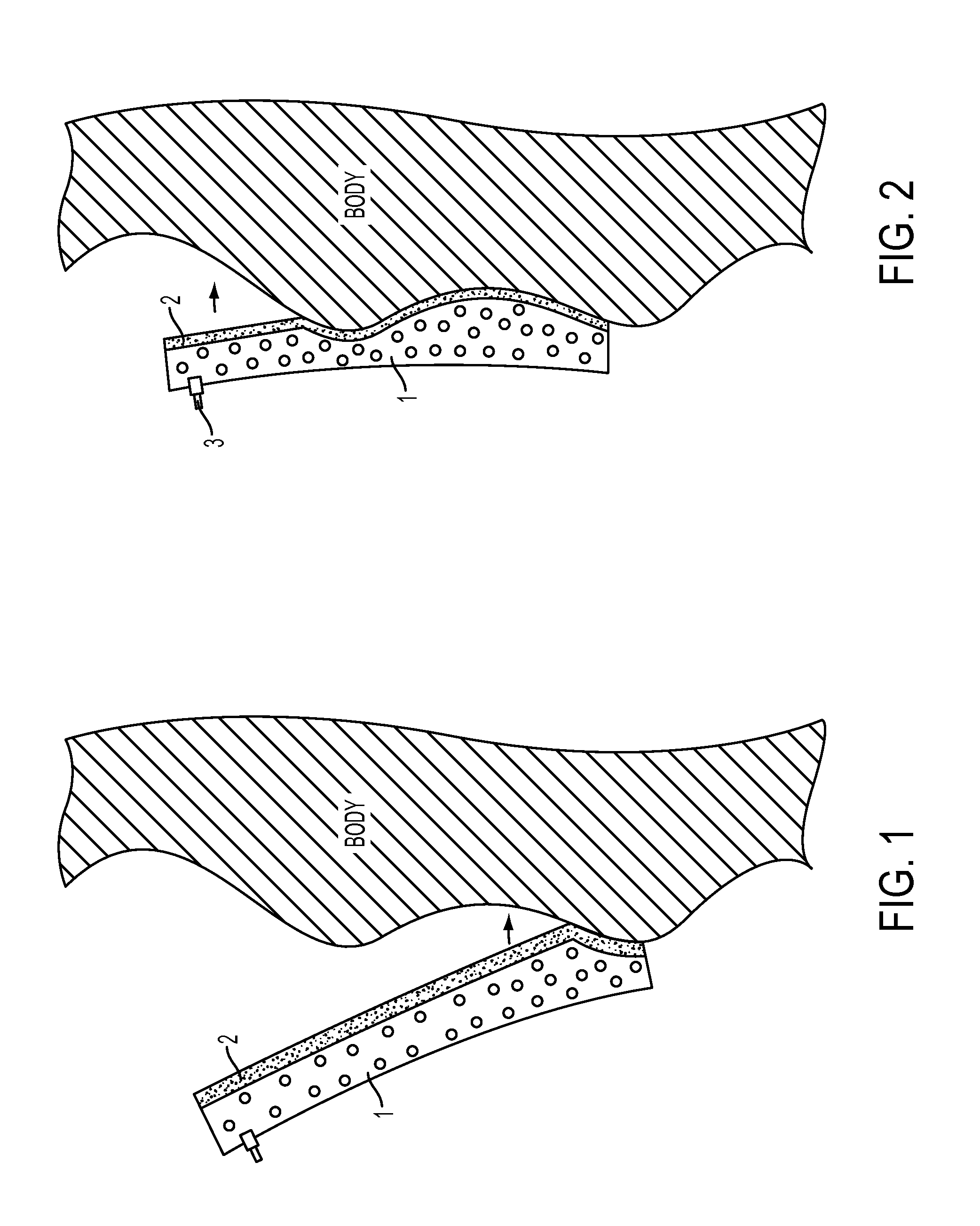Immobilization Device
a technology of immobilization device and immobilization position, which is applied in the field of human medicine or medical research, can solve the problems of insufficient fixation of the body, inability to restrict or define the position, and inability to repeat the immobilization precisely the same location, and achieves the effects of high degree of protection, simple construction and application
- Summary
- Abstract
- Description
- Claims
- Application Information
AI Technical Summary
Benefits of technology
Problems solved by technology
Method used
Image
Examples
Embodiment Construction
[0043]The following description is provided to enable any person skilled in the art to make and use the invention and sets forth the best modes contemplated by the inventor of carrying out his invention. Various modifications, however, will remain readily apparent to those skilled in the art, since the general principles of the present invention have been defined herein specifically to provide a device for immobilization of the human body for medical and related applications.
[0044]The device for fixation of the human body or of body parts comprises a molding element 1, which is positionable on the body surface (shown shaded; a back part here, for example) (FIG. 1). This is performed using an adhesive layer 2, which is connected to the molding element 1, e.g., an inner adhesive film is glued on and optionally has a carrier layer to an outer adhesive film, which is pressed against the skin of the body. The adhesive layer 2 can also be formed by a spray adhesive, which is sprayed onto ...
PUM
 Login to View More
Login to View More Abstract
Description
Claims
Application Information
 Login to View More
Login to View More - R&D
- Intellectual Property
- Life Sciences
- Materials
- Tech Scout
- Unparalleled Data Quality
- Higher Quality Content
- 60% Fewer Hallucinations
Browse by: Latest US Patents, China's latest patents, Technical Efficacy Thesaurus, Application Domain, Technology Topic, Popular Technical Reports.
© 2025 PatSnap. All rights reserved.Legal|Privacy policy|Modern Slavery Act Transparency Statement|Sitemap|About US| Contact US: help@patsnap.com



